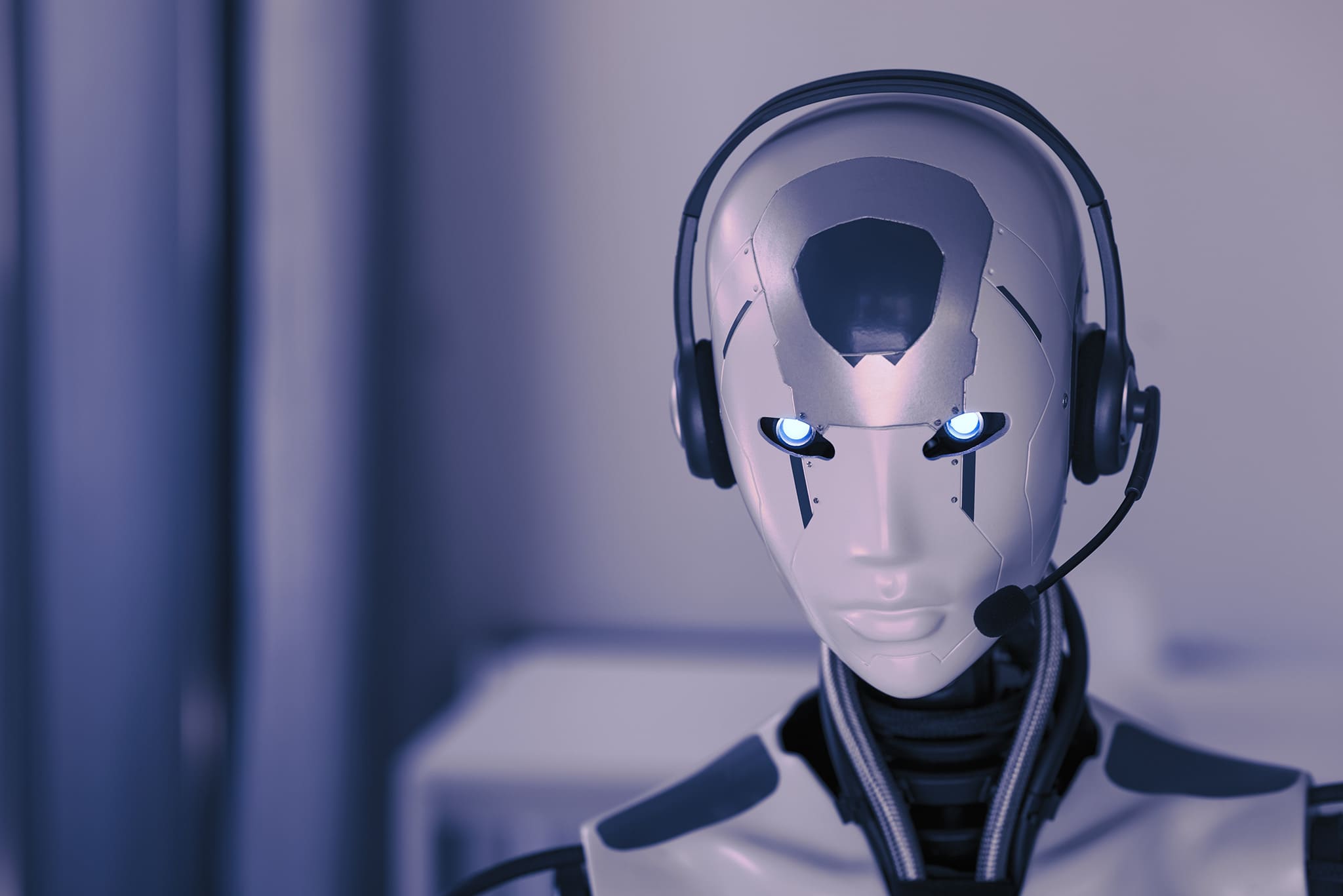In the modern digital economy, the customer is firmly in the driver’s seat. They are more informed, more connected, and have higher expectations than ever before. Chief among these expectations is the demand for instant, frictionless, and personalized support, available 24 hours a day, 7 days a week. For businesses, attempting to meet this demand with human-only support teams is a monumental challenge. It leads to long wait times, overworked agents, and a customer experience that is often inconsistent and frustrating. This is the critical business problem that has paved the way for a technological revolution in the contact center.
The solution lies in the strategic implementation of artificial intelligence. The use of AI in customer service has moved from a futuristic concept to a present-day necessity for any company that wants to compete on the basis of customer experience (CX). By leveraging intelligent automation, businesses can not only meet but exceed modern customer expectations, all while operating more efficiently. This guide will explore the profound impact of AI on the support landscape, the key differences between various AI tools, and the tangible benefits of building an AI-driven customer support strategy.
What is AI in Customer Service?
AI in customer service is the application of artificial intelligence technologies, including machine learning (ML), natural language processing (NLP), and automation, to manage, enhance, and streamline customer interactions. It is not a single technology, but rather a collection of tools and strategies designed to achieve two primary goals:
- Automate high-volume, repetitive interactions to provide instant, 24/7 support.
- Augment human agents by providing them with real-time data, insights, and tools to handle complex issues more effectively.
This means AI can function as a customer’s first point of contact, answering common questions and resolving simple issues on its own. It can also work in the background, analyzing a live customer conversation to provide a human agent with relevant knowledge base articles, customer history, and next-best-action recommendations. It is a holistic approach that seeks to make the entire support ecosystem faster, smarter, and more efficient for everyone involved.
Relevance in 2025: Why AI is No Longer Optional
The adoption of AI-driven customer support has accelerated dramatically, and by 2025, it is considered table stakes for any competitive business. Several key factors are driving this universal adoption. First, as mentioned, customer expectations for instant, always-on support have solidified. A business that makes a customer wait hours for a simple answer will lose that customer to a competitor who can provide it in seconds.
Second is the explosion of data. Businesses now have access to a vast amount of information about their customers’ history, preferences, and behavior. AI is the only technology capable of processing this data in real-time to deliver the kind of hyper-personalized service that customers now expect. Finally, the economic pressure to improve efficiency is relentless. AI allows businesses to scale their support operations to handle a growing customer base without a linear increase in headcount, a critical factor for sustainable growth.
Difference: Chatbots vs Virtual Assistants
When discussing AI in customer service, it’s crucial to understand the important distinction between basic chatbots and true virtual assistants. While the terms are often used interchangeably, they represent vastly different levels of technological sophistication. This chatbots vs virtual assistants comparison is key to developing a smart automation strategy.
Chatbots (The Rule-Based Responders)
Traditional chatbots are the first generation of support automation. They typically operate based on a pre-written script or a decision tree. They are excellent at answering a limited set of simple, frequently asked questions. If a user asks a question that is in its script, it can provide a fast, accurate answer. However, if the user’s query deviates from the script, uses slang, or is too complex, the chatbot will likely respond with a frustrating “I’m sorry, I don’t understand.” They are rule-based and lack any real intelligence or conversational ability.
Virtual Assistants (The Intelligent Problem-Solvers)
A virtual assistant, also known as an intelligent virtual agent or conversational AI, is a significant leap forward. Unlike their rule-based cousins, virtual assistants are powered by advanced AI, machine learning, and natural language processing. This allows them to:
- Understand Intent: They can understand the meaning behind a user’s query, even if it’s phrased in a novel or conversational way.
- Handle Complex Conversations: They can manage multi-turn conversations, ask clarifying questions, and remember the context of the interaction.
- Integrate and Transact: This is a critical difference. A true AI Virtual Assistant can integrate with back-end business systems (like your CRM or order management system) to perform actions on the user’s behalf, such as checking an order status, updating an address, or processing a return.
In the chatbots vs virtual assistants debate, the chatbot provides information, while the virtual assistant takes action and solves problems.
Benefits of AI-Driven Customer Support
Implementing a true virtual assistant strategy delivers a host of powerful benefits that impact the customer experience, operational efficiency, and the bottom line.
24/7 Availability and Instantaneous Responses
This is the most obvious and impactful benefit. An AI-powered virtual assistant is always on, ready to provide instant support to customers in any time zone, on any day of the year, including holidays. This immediate accessibility is a massive driver of customer satisfaction and a key component of modern AI-driven customer support.
Significant Operational Cost Reduction
By handling the vast majority of routine, high-volume customer inquiries, AI drastically reduces the workload on human agents. According to industry studies, AI can successfully handle up to 80% of tier-1 interactions. This allows businesses to scale their support capacity without needing to hire a proportional number of new agents, leading to significant savings in salary, training, and infrastructure costs. A skilled AI Automation Agency can help you model this potential ROI.
Data-Driven Personalization at Scale
A virtual assistant that is integrated with your CRM can instantly access a customer’s entire history—past purchases, previous support tickets, and recent website activity. It can use this context to provide a highly personalized and relevant experience. It can greet a returning customer by name, reference their recent order, and provide proactive solutions based on their history. This level of personalization is incredibly difficult for a human agent to achieve instantly and is a cornerstone of effective AI-driven customer support.
Empowering Human Agents
One of the most important benefits of AI in customer service is its effect on human employees. By automating the repetitive, low-level questions, AI frees up human agents to focus on the tasks where they are most valuable: handling complex, emotionally charged, or high-stakes customer issues that require empathy, critical thinking, and genuine relationship-building. This not only leads to better outcomes for your most important customer problems but also reduces agent burnout and increases job satisfaction.
How to Implement AI in Customer Service
A successful implementation requires a strategic approach. First, you should start by identifying the right use case. Analyze your support ticket data to find the most common, high-volume, and low-complexity inquiries. These are the perfect candidates for your initial automation efforts. Next, it is crucial to focus on integration. To be truly effective, your virtual assistant must be connected to your core business systems. This is how you Automate Business Processes and allow the AI to perform meaningful actions for the user. Finally, always design a seamless and intelligent handoff process. When an issue is too complex for the AI, it should be able to escalate the conversation to the right human agent with the full context of the interaction intact.
Conclusion
The debate of chatbots vs virtual assistants is settling, and the strategic imperative is clear. The future of world-class customer service lies in a symbiotic partnership between human talent and artificial intelligence. The goal is not to replace the essential human elements of empathy and complex judgment but to augment them. AI is the tireless front-line agent that provides speed and scale, while human agents are the expert specialists who build relationships and solve the most challenging problems.
At Wildnet Edge, we build these sophisticated, AI-driven customer support ecosystems. Our AI-first approach focuses on creating intelligent virtual assistants that serve as a true co-pilot for your human team. We build systems that can understand customer sentiment, predict user needs, and provide human agents with the real-time insights they need to perform at their absolute best. This fusion of automation and augmentation is the new standard for customer experience, creating a support operation that is not just efficient, but also deeply intelligent and remarkably human.
FAQs
The main difference is intelligence and capability. A chatbot typically follows a script or a set of rules and can only answer simple, pre-programmed questions. A virtual assistant uses advanced AI to understand conversational language, interpret user intent, and integrate with other business systems to perform tasks and solve complex problems.
While modern AI can be trained to recognize the sentiment of a customer’s message (e.g., anger or frustration), this is a scenario where a human agent is still far superior. A best-practice AI system is designed to recognize these situations and immediately escalate the conversation to a human who can provide the necessary empathy and nuanced support.
No, AI is not expected to replace human agents, but rather to change their role. AI will handle the majority of routine, repetitive inquiries, allowing human agents to evolve into more specialized, high-value roles focused on solving complex problems, managing key customer relationships, and handling sensitive issues.
AI-driven customer support is a strategy that uses AI technologies to manage and improve the entire customer service lifecycle. This includes using virtual assistants for 24/7 front-line support, AI-powered tools that assist human agents with real-time information, and AI analytics to gain insights from customer conversations.
A good first step is to analyze your current customer service data to identify the most frequent and repetitive inquiries. These “low-hanging fruit” are the perfect use cases for an initial virtual assistant implementation. Starting small allows you to prove the value and learn before scaling up to more complex automations.

Nitin Agarwal is a veteran in custom software development. He is fascinated by how software can turn ideas into real-world solutions. With extensive experience designing scalable and efficient systems, he focuses on creating software that delivers tangible results. Nitin enjoys exploring emerging technologies, taking on challenging projects, and mentoring teams to bring ideas to life. He believes that good software is not just about code; it’s about understanding problems and creating value for users. For him, great software combines thoughtful design, clever engineering, and a clear understanding of the problems it’s meant to solve.
 sales@wildnetedge.com
sales@wildnetedge.com +1 (212) 901 8616
+1 (212) 901 8616 +1 (437) 225-7733
+1 (437) 225-7733































